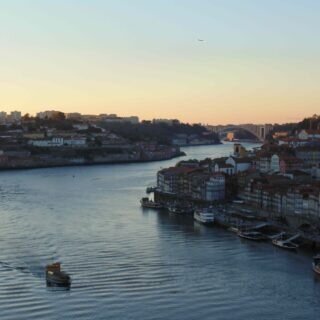Around the station of São Bento, particularly behind and beside it one will always be able to find street art, amidst all the tagging and graffiti. There is, however one particular kind of street art that stands out rather strikingly from a lot of the others: and that’s the Espigar nas Gentes project.
This little project was concocted around 2015, in the decade when Porto was beginning to open itself up to the opportunities of creativity and culture offered by a more tolerant approach to street art as a means of urban renewal, cultural promotion and enrichment. Before then, street paintings (whether tags, graffitis, or full fledged street art) would all be thrown in the same bag: the bag of vandalism and illegality. It wasn’t unwarranted; many people’s homes and the nation’s monuments were victims of attacks of this kind. Unfortunately however, street artists’ work, which made only abandoned buildings or unimportant urban furniture like electrical and traffic light boxes their canvas, would get taken down just the same. Nevertheless the scenery and policies started to change, and Espigar nas Gentes was a part of that.

Now, what is Espigar nas Gentes? A fair good question which ought to be answered with what the expression “Espigar nas gentes” even means: it could go something like “mingling with a people”. Getting to know them, their neighbourhood, their dynamics, the characters, the jokes… something you could do by hanging out at one of the many tascas (sort of taverns) around Portugal. As to what people the project covers specifically, is the São Bento Central Railway Station. A very important element of the city of Porto which, naturally due to its heavy use and traffic, developed a whole community dedicated to taking care of it. It would then evolve to include those who would take care of those who take care of the station, and so on and forth.

The project has a fair few art pieces on the streets of Madeira and Cimo da Vila, both of which lead to either flanks of the São Bento station, but are otherwise secondary streets. The first of the pieces you can find on the upper part of Madeira street, on a backdoor of the large gray hotel, on the south side of the street. This piece with a person full of windows and open doors reference the neighbourly atmosphere of the heyday of these neighbourhoods. Everyone’s door was open and to make impromptu invitations to families for dinner or lunch wasn’t an unusual occurrence. In Cimo da Vila you can find most of the other pieces; the portrait of a lady who works as a ticket seller at the station, who was given flowers by grateful travellers, and is a lovely painter; a depiction of the many occupations of the community by Mariana, A Miserável, and besides a few others, one by Nicolau which stands out: it is a top down view depiction of the western end of Cimo da Vila street, with various people going on about their lives. In between them you can see blue lines going around between people. The piece is entitled “Os Laços”, “The Ties”, and these lines represent the connections between the community, what ties them together. Could be two ladies conversing from their windows across the street; could two kids playing football; or a gentleman serenading a fair maiden. All these ties would connect the neighbourhood together. Many people who were to each other their whole lives, and lived in a community who helped each other through hard times, and enjoyed together the better ones.

This project although sometimes discreet, decorate the doors around the station, and offer a fleeting glance into the lively communities that formed around it. Although now a shadow of its former self, the neighbourhood bears still much of the heritage from its golden years in the middle of the previous century, and now also street art that recalls those days, perhaps with an ounce of hope that they may yet return. Nostalgia isn’t a stranger to the Portuguese people.
Come and explore this streets with us! Our Street Art tour happens daily!



